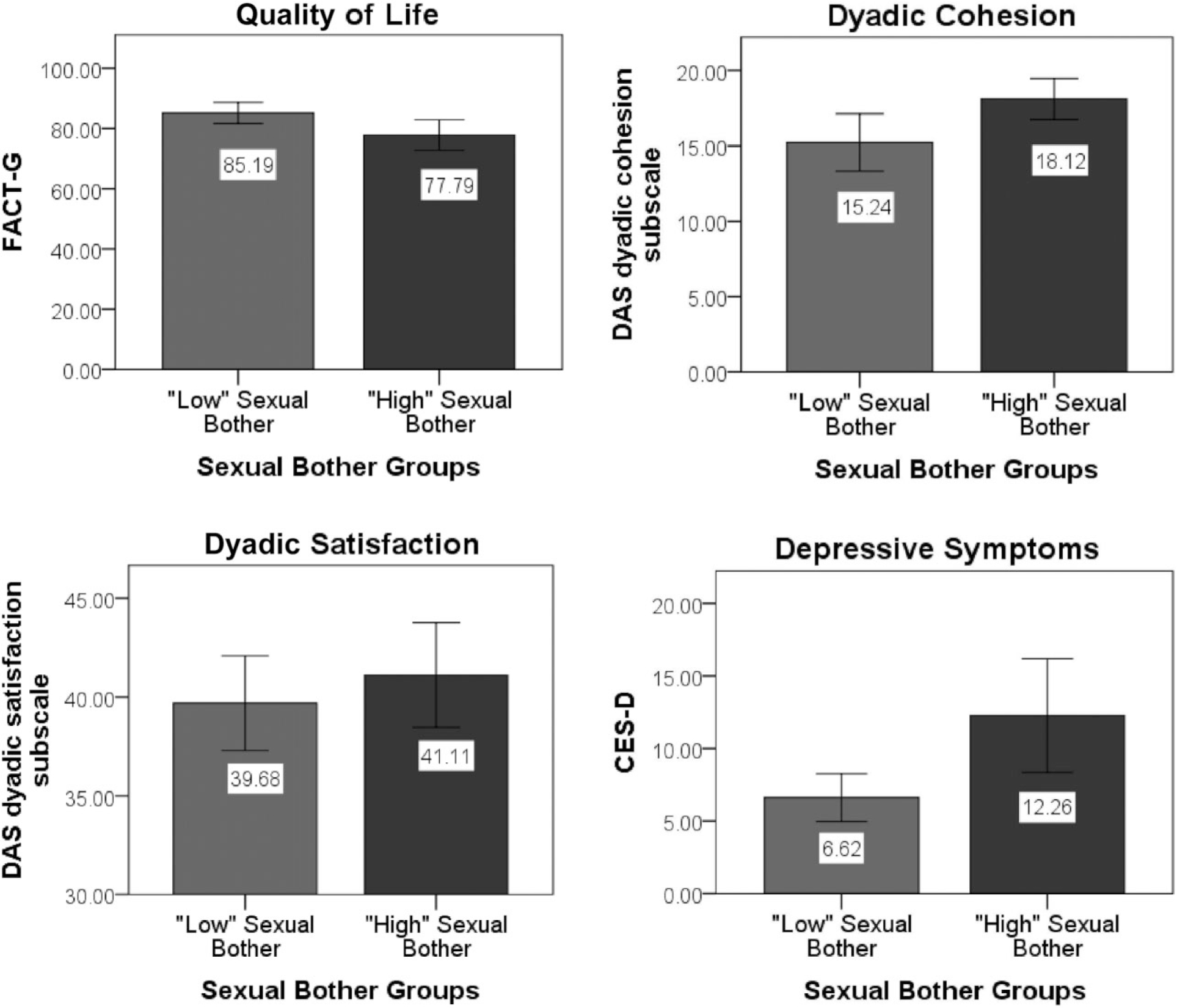Figure 1.

Independent-samples t-tests of group differences between men classified into “low” vs. “high” sexual bother groups.
Men classified into the “higher” sexual bother group reported significantly greater depressive symptoms and lower levels of quality of life as well as better dyadic satisfaction and cohesion compared with men classified into the “lower” sexual bother group (all Ps < 0.05). Sexual bother groups were defined based on a median split of the EPIC sexual bother subscale. Quality of life was measured using the Functional Assessment of Cancer—General (FACT-G); depressive symptoms were measured using the Center for Epidemiologic Studies Depression Scale (CES-D); and relationship functioning was measured using the Dyadic Adjustment Scale (DAS) dyadic satisfaction and cohesion subscales.
